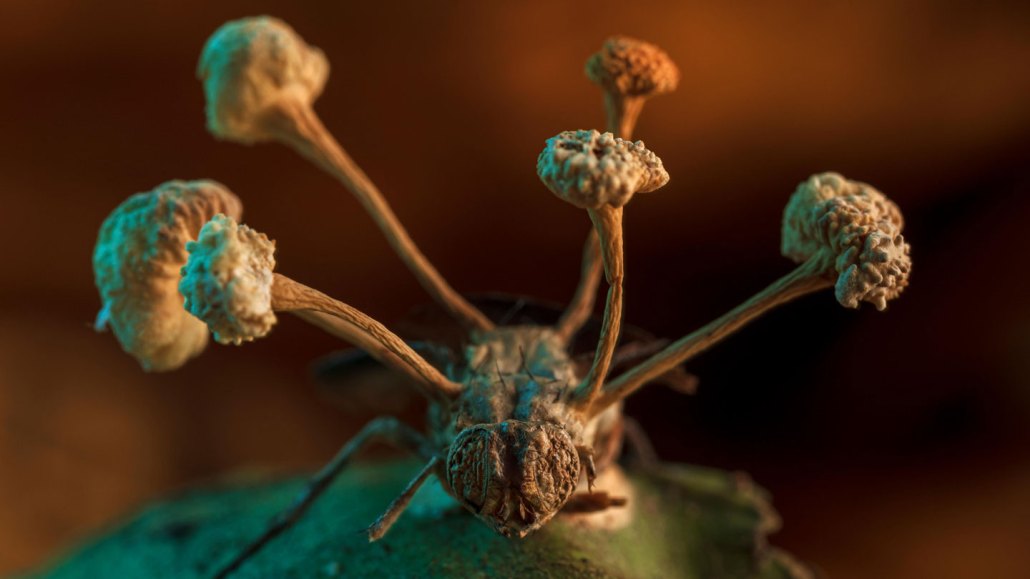
Fruiting bodies of a “zombie” fungus erupt from the body of a fly in this winning picture from the 2022 BMC Ecology and Evolution photography competition.
Roberto García-Roa

Fruiting bodies of a “zombie” fungus erupt from the body of a fly in this winning picture from the 2022 BMC Ecology and Evolution photography competition.
Roberto García-Roa